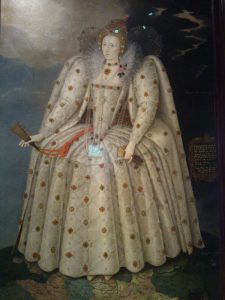Six months ago I visited the Palace of Holyroodhouse in Edinburgh. I had been to Scotland before, and I am especially familiar with its regal history. But it was only on this latest visit to the royal Scottish residence, at a time of looming Brexit, that the historical heritage involved in present-day politics struck me the hardest.
As a Tudor scholar, I am greatly invested in the history of the marriage of the first Tudor Princess, Margaret (1489–1541), to King James Stewart IV of Scotland (1473–1513). The purpose of the union was to create perpetual peace on the isles, and although this peace was hard to attain at first, it was nevertheless a powerful move toward the union of the crowns.
The story of Margaret’s granddaughter, Mary Stuart (1542–67), and Elizabeth Tudor (1533–1603) (rekindled again last year in a spectacular albeit not quite historically accurate film), is often portrayed merely as a tragic history of two monarchs fighting for power. Yet, it is much due to the relationship between Mary Queen of Scots (and once also Queen of France) and Queen Elizabeth I of England that events eventually led to the Stuart succession on the English throne in 1603. A century later, this resulted in uniting the two countries into one kingdom, making Britain truly great.
Unions are formed and resolved with time, that is a historical reality. However, change is never easy, and it is always both an uncertainty and a challenge. Without any reference to modern-day politics as such, on the eve of possible Brexit, this change will affect the union which was the ancient Arthurian dream of the Tudors and which cost the Stuarts so much bloodshed before their final peaceful accession. If Brexit breaks that union, it is this late-Medieval dream of a shared future that is breaking. And my heart.


